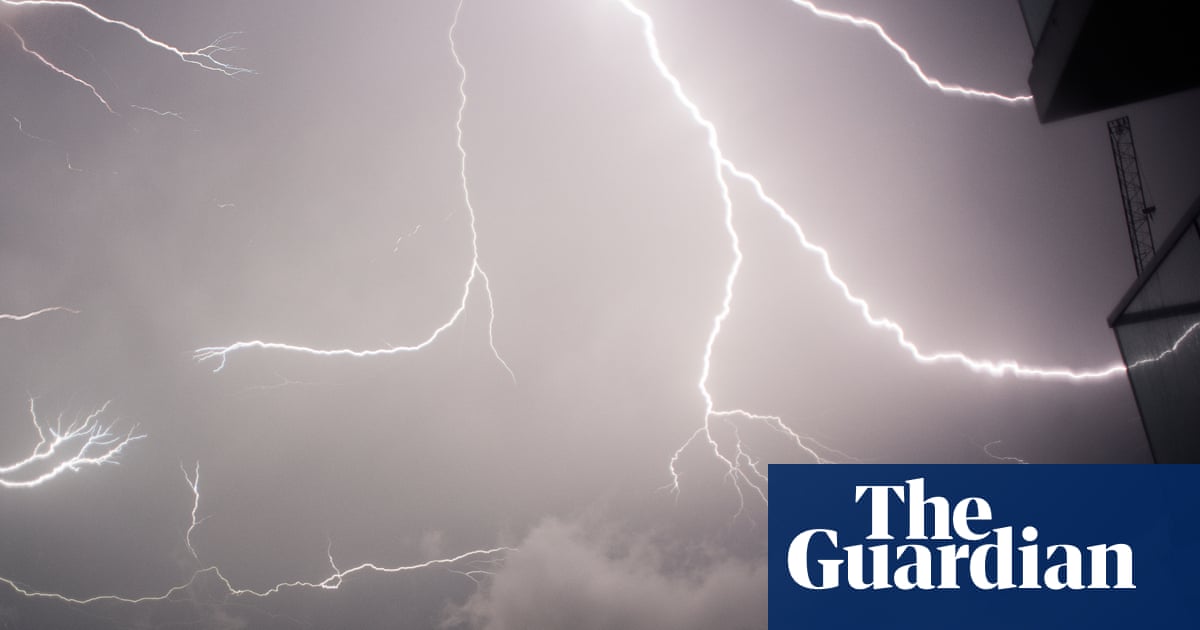Unusual features found in rocks on Mars may be the handiwork of ancient microbial life that eked out an existence on the red planet billions of years ago.
The rocks were spotted by Nasa’s Perseverance rover as it trundled along Neretva Vallis, an ancient river valley that was carved into the landscape by water flowing into the Jezero crater in the planet’s distant past.
The rover, which touched down in Jezero crater in 2021, encountered the rocks last year as it explored an outcrop called the Bright Angel formation on the northern edge of the ancient valley.
Instruments onboard the rover detected signs of carbon-based compounds in the rocks, while images captured intriguing surface spots and nodules that are often associated with microbial life on Earth.
The unusual features may have prosaic origins in the form of chemical reactions that played out over millennia. But in a report published in Nature on Wednesday, scientists say the features should be regarded as potential signs of life.
“Our analysis leads us to conclude that the Bright Angel formation contains textures, chemical and mineral characteristics, and organic signatures that warrant consideration as ‘potential biosignatures’,” they write.
While Mars appears an arid world today, its surface is crossed and dotted with ancient river and lake beds, pointing to a warmer, wetter past. If life ever gained a foothold on the planet, traces may be found in its rocks as organic matter and possibly even fossilised organisms.
Dr Joel Hurowitz, a geochemist and planetary scientist at Stony Brook University in New York, and first author on the paper, said the unusual features on the rocks were accumulations of minerals, including an iron-phosphate mineral, vivianite, and an iron sulphide mineral, greigite.
“These minerals appear to have formed as a result of reactions between the mud of the Bright Angel formation and organic matter that is also present in that mud,” he said. The reactions appeared to have taken place shortly after the mud was deposited on the lake bed.
On Earth, reactions that combine organic matter and chemical compounds in mud to form new minerals, such as vivianite and greigite, are often driven by microbial activity. The microbes consume the organic compounds and produce the minerals as a byproduct of their metabolism.
But there are other ways to produce the minerals. “The reason … we cannot claim this is more than a potential biosignature is that there are chemical processes that can cause similar reactions in the absence of biology and we cannot rule those processes out completely on the basis of rover data alone,” Hurowitz said.
Hurowitz added: “We should be conservative and stick to the potential biosignature designation until future research and analysis on the sample collected from this geological formation can be performed on Earth.”
The researchers hope the findings will kickstart efforts in laboratories to see if the intriguing features can be recreated through biological and non-biological processes. They also want it to spur field work at sites where similar reactions may have taken place in the past. That would help scientists work out whether the features are biology at work.
Ultimately, confirmation may have to wait for Mars rocks, which have been stashed aboard Perseverance, to be brought back to Earth, but Nasa plans for such a mission are badly delayed and in doubt.
In an accompanying article, Dr Janice Bishop, a planetary scientist at the Seti Institute in California and Dr Mario Parente, an expert in remote sensing on planets at the University of Massachusetts Amherst, said: “There is no evidence of microbes on Mars today, but if any had been present on ancient Mars, they too might have reduced sulfate minerals to form sulfides in such a lake at Jezero crater.”

 3 months ago
54
3 months ago
54

















































